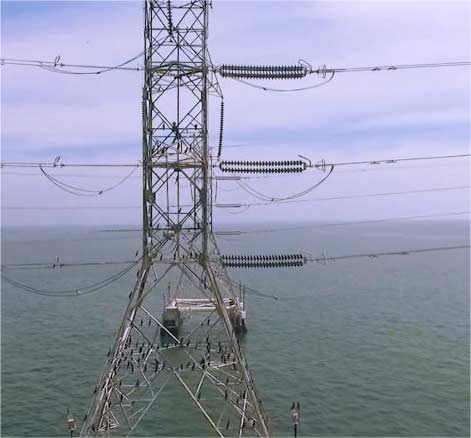 By using drones to inspect electrical transmission towers, lives are saved and tragedies are avoided.
By using drones to inspect electrical transmission towers, lives are saved and tragedies are avoided.
Such as those that occurred in November 2021 in the state of Nueva Esparta, Venezuela where one person died due to the collapse of a 115kv tower, this event caused the loss of the thermoelectric generation of the Juan Bautista Arismendi Plant in that locality. And more recently, on March 13, 2022, 3 technicians lost their lives while repairing a breakdown in an electrical transmission tower 40 meters high, located in the state of Falcón.
Tragedies that could have been avoided if preventive inspections are kept up to date and if the structural problems are of previous existence, they can be detected through the use of drones, which increase the efficiency in obtaining the necessary data to make decisions in the heat of the moment.
By detecting, through this data, any deficiencies in the performance of such structures, an action plan can be ordered that not only reduces risks, but also triggers subsequent maintenance schedules that will improve the overall condition of the power grid.
As for the mandatory climbs that must be made, which pose a challenge to the safety of the personnel involved. Storms, wild animals, birds, weather, life cycles of components. The use of Drones can lessen such risks. For example:
A seemingly simple task, such as tightening or replacing a bent bolt, is not really simple in these cases. What this means is that a qualified and trained climber must decide on the necessary spare parts and tools, and physically carry them on his climb along with his safety equipment. You can’t carry everything (to minimize weight and associated risk), but you need the optimum number (to avoid going down and climbing again and increasing the associated risk).
What are the risks?
![]()
Well, a climb on a tall, thin structure (belayed or unbelayed) is fraught with risk.
Wind and swaying of the structure must be taken into account. Structural deficiencies, slippery holds, bee hives, birds and wild animals can suddenly pose unforeseen challenges during the mission. Common sense demands that the number of climbs and their duration be kept to a minimum.
Some of the activities climbers perform can now be transferred to drones. And they help reduce the associated risks by identifying potential hazards such as bird nests and bee hives; structural deficiencies such as frayed cables, missing nuts, broken bolts, damaged ladders, storm or animal damage; and the right tools and spare parts needed for the job at hand.As technology advances, the available sensors also improve. Thermal and zoom cameras can be integrated into remotely piloted aircraft to detect hot spots that are not visible to the naked eye.
Technical data such as transformer temperature, span height and tilt of each tower can also be collected.
But the biggest advantage of using drones to inspect power transmission lines will always be the safety and efficiency aspect (longer inspection path in less time).
A 60-70% reduction in the number of climbs required, combined with risk assessment and risk mitigation planning, are better targets for the implementation of this technology.